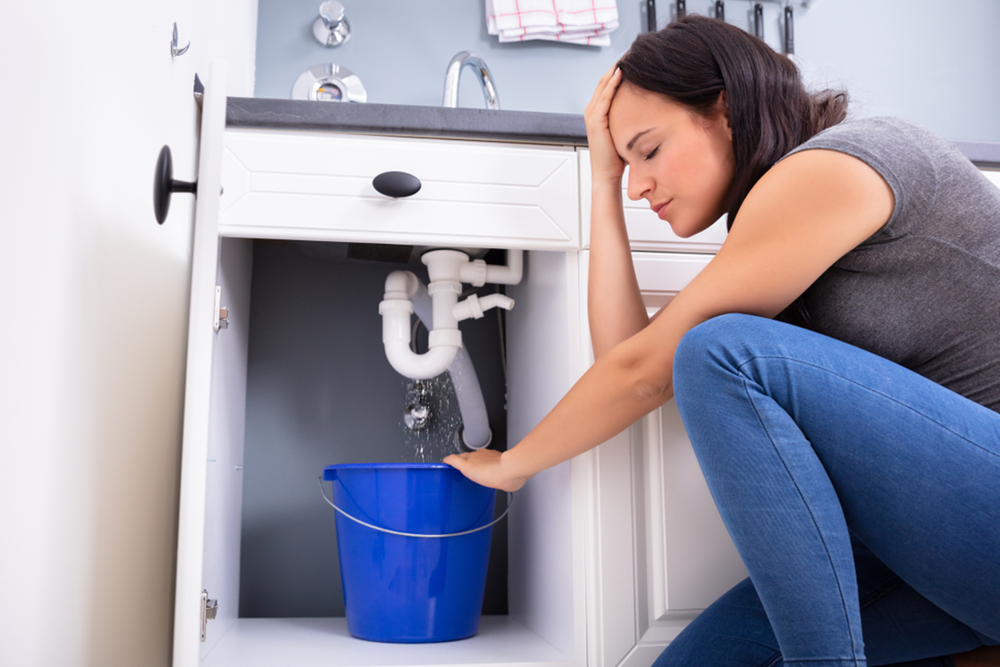Effortless Ways to Repair a Leaky Waste Disposal Unit
Effortless Ways to Repair a Leaky Waste Disposal Unit
Blog Article
Nearly everybody has got their own unique thinking with regards to The Handy Guide To Fixing Your Garbage Disposal Leaking.

Garbage disposals are essential kitchen area appliances that assist in dealing with food waste efficiently. However, a leaking waste disposal unit can be an irritating and unpleasant problem to handle. Thankfully, numerous leakages can be taken care of quickly with a couple of straightforward actions. In this article, we will certainly review just how to take care of a leaking waste disposal unit successfully.
Introduction
Waste disposal unit are mounted under kitchen sinks and are designed to shred food waste into smaller sized pieces, enabling it to go through the pipes system quickly. While these gadgets are normally reliable, leaks can take place in time due to deterioration, loose connections, or damage to the device.
Step-by-Step Overview to Repairing a Leaking Garbage Disposal
Turn Off the Power
Before attempting any kind of repair work, ensure that the power to the garbage disposal unit is turned off to prevent the threat of electrical shock.
Find the Leakage
Identify the specific location of the leak and determine the cause
Tighten up Connections
Utilize a wrench to tighten any type of loose connections between the disposal device and the plumbing system.
Replace Seals or Gaskets
If the leak results from used seals or gaskets, get rid of the old elements and replace them with new ones.
Patching Splits or Openings
For splits or holes in the disposal unit, usage epoxy or an appropriate patching material to secure the broken location.
Determining the Resource of the Leakage
Prior to trying to take care of a dripping waste disposal unit, it is important to identify the resource of the leakage. This can normally be done via aesthetic inspection or by carrying out basic tests.
Visual Evaluation
Check the garbage disposal system very carefully for any kind of signs of water leakage. Pay very close attention to locations around seals, gaskets, and connection factors.
Testing for Leaks
One way to check for leakages is by running water via the disposal device and looking for any kind of noticeable indicators of leakage.
Common Root Causes Of Leaks in Rubbish Disposals
Worn Seals and Gaskets
Seals and gaskets play an important duty in avoiding water from leaking out of the garbage disposal. Over time, these parts can wear away, resulting in leakages around the disposal unit.
Loose Links
The connections in between the garbage disposal and the pipes system can come to be loosened over time, triggering water to leakage out during operation.
Fractures or Holes in the Disposal Device
Physical damage to the garbage disposal, such as splits or holes in the real estate, can likewise result in leaks.
Devices and Products Needed for Taking Care Of a Leaking Waste Disposal Unit
Prior to beginning the repair service procedure, collect the essential tools and products, consisting of a screwdriver, adjustable wrench, plumbing's putty, substitute seals or gaskets, and epoxy or patching material for repairing cracks or holes.
Examining the Waste Disposal Unit After Repair Service
When the repair is complete, check the waste disposal unit by running water with it to ensure that the leakage has actually been fixed.
Preventive Upkeep Tips to Prevent Future Leaks
To stop future leaks, it is important to do routine upkeep on your garbage disposal. This includes maintaining it tidy, avoiding putting non-food things or hard things down the disposal, and regularly looking for leakages or various other concerns.
Verdict
To conclude, repairing a leaking waste disposal unit is a fairly simple procedure that can be finished with standard devices and materials. By complying with the steps laid out in this short article and exercising preventive upkeep, you can keep your garbage disposal in good working problem and stay clear of pricey repair services in the future.
What to Do About a Leaking Garbage Disposal
A leaking garbage disposal often goes unnoticed until you confront a sopping cabinet, a foul-smelling puddle, or an audible drip-drip-drip from the unit. The fix can be frustrating, too, because the leak can stem from a number of components in the system. Fortunately, with a little sleuthing, you can zero in on the leak and—depending on the exact location—stop the icky oozing and repair the component that caused it. Worst case scenario, if it turns out that the garbage disposal must be replaced, installing a new one is a reasonable do-it-yourself task for those with basic plumbing skills. Read on to keep the cash you’d otherwise hand over to a pro.
Prepare to find the leak
Prior to testing the garbage disposal for leaks, unplug it at the wall outlet and turn off the power from the breaker box to prevent electrical shock. Then insert a watertight sink stopper into your sink drain and wipe the unit dry with a clean cloth. In any handy container, mix a few drops of food coloring into a few cups of water, and pour the dyed water onto the sink stopper to help you locate the leak.
Investigate the source
the top, where the disposal meets the sink drain the side, where the dishwasher hose or main drain pipe connects to the disposal or the bottom of the unit Inspect each of these locations while gliding a light-colored rag over the unit; the dyed water will readily show on the rag and reveal the location of the leak. If a leak isn’t immediately apparent, remove the sink stopper and pour a few more cups of dyed water down the sink drain, then check for leaks again. Leaks near the top of the unit are more likely to show themselves while the sink is plugged, while side and bottom leaks are more noticeable while the sink is unplugged.
The metal sink flange that sits directly inside the sink drain is typically sealed around the top with plumber’s putty (a clay-like sealant) and then secured from under the sink with bolts. If the plumber’s putty deteriorates, or the bolts loosen, the flange can no longer form a watertight seal between the sink drain and the disposal—which could cause a leak at the top of the unit.
To reseal the leaky flange, you must first detach the garbage disposal. Start by loosening the screws securing the main drain pipe to the disposal, then loosen the screws in the metal clamp securing the dishwasher hose to the disposal and detach the drain pipe and dishwasher hose from the disposal. Loosen the screws in the mounting ring that connects the disposal to the metal mounting assembly beneath the sink, then pull down the disposal and carefully set it on a clean, dry surface. Loosen the bolts in the mounting assembly with a wrench, then pull down the mounting assembly and set it near the disposal.

I'm just very curious about Tips on Fixing a Leaking Garbage Disposal and I'm hoping you liked my post. Are you aware of somebody who is in the market for Tips on Fixing a Leaking Garbage Disposal? Feel free to promote it. Many thanks for your time. Visit again soon.
Click Here Report this page